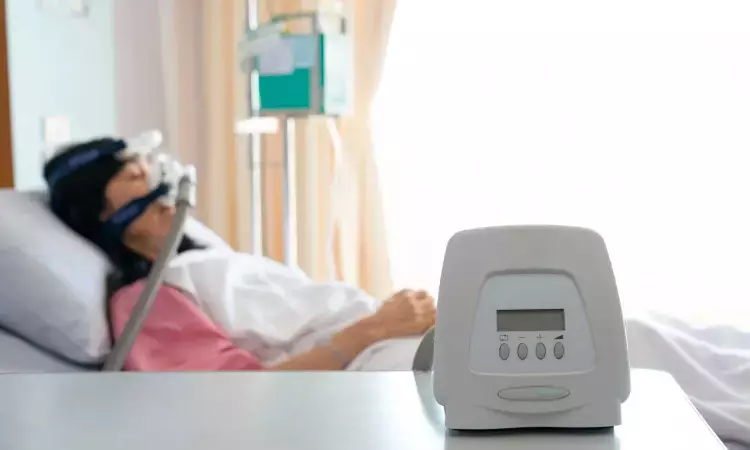- Home
- Medical news & Guidelines
- Anesthesiology
- Cardiology and CTVS
- Critical Care
- Dentistry
- Dermatology
- Diabetes and Endocrinology
- ENT
- Gastroenterology
- Medicine
- Nephrology
- Neurology
- Obstretics-Gynaecology
- Oncology
- Ophthalmology
- Orthopaedics
- Pediatrics-Neonatology
- Psychiatry
- Pulmonology
- Radiology
- Surgery
- Urology
- Laboratory Medicine
- Diet
- Nursing
- Paramedical
- Physiotherapy
- Health news
- Fact Check
- Bone Health Fact Check
- Brain Health Fact Check
- Cancer Related Fact Check
- Child Care Fact Check
- Dental and oral health fact check
- Diabetes and metabolic health fact check
- Diet and Nutrition Fact Check
- Eye and ENT Care Fact Check
- Fitness fact check
- Gut health fact check
- Heart health fact check
- Kidney health fact check
- Medical education fact check
- Men's health fact check
- Respiratory fact check
- Skin and hair care fact check
- Vaccine and Immunization fact check
- Women's health fact check
- AYUSH
- State News
- Andaman and Nicobar Islands
- Andhra Pradesh
- Arunachal Pradesh
- Assam
- Bihar
- Chandigarh
- Chattisgarh
- Dadra and Nagar Haveli
- Daman and Diu
- Delhi
- Goa
- Gujarat
- Haryana
- Himachal Pradesh
- Jammu & Kashmir
- Jharkhand
- Karnataka
- Kerala
- Ladakh
- Lakshadweep
- Madhya Pradesh
- Maharashtra
- Manipur
- Meghalaya
- Mizoram
- Nagaland
- Odisha
- Puducherry
- Punjab
- Rajasthan
- Sikkim
- Tamil Nadu
- Telangana
- Tripura
- Uttar Pradesh
- Uttrakhand
- West Bengal
- Medical Education
- Industry
Study Links Obstructive Sleep Apnea and Nocturnal Hypoxemia to Early Morning Heart Attacks

China: A recent study published in the Journal of the American Heart Association has unveiled a compelling association between obstructive sleep apnea (OSA), nocturnal hypoxemia, and the circadian rhythm of myocardial infarction (MI). The researchers revealed that patients with moderate to severe OSA showed a higher incidence of myocardial infarction between midnight and 5:59 a.m., particularly when nocturnal hypoxemia was present.
"Moderate to severe OSA (OR 1.66) and markers of nocturnal hypoxemia—oxygen desaturation index ≥15 (OR 1.80), minimum oxygen saturation ≤86% (OR 1.70), and ≥2% of total sleep time with oxygen saturation <90% (OR 1.54)—emerged as significant predictors of MI during this early morning period," the researchers reported.
The circadian rhythm of myocardial infarction in patients with obstructive sleep apnea remains a topic of debate, and no studies have directly explored the relationship between nocturnal hypoxemia and the timing of MI onset. To address this gap, Shaoping Nie, Center for Coronary Artery Disease, Division of Cardiology Beijing Anzhen Hospital, Capital Medical University Beijing China, and colleagues aimed to evaluate the association between OSA, nocturnal hypoxemia, and the occurrence of MI during the night.
For this purpose, the researchers recruited patients with MI from the OSA‐acute coronary syndrome (ACS) project. The time of MI onset was determined based on the patient's report of the chest pain that led to hospital admission. After clinical stabilization during hospitalization, all patients underwent an overnight sleep study using a type III portable sleep monitoring device.
The researchers then assessed the circadian variation in MI onset, comparing patients with moderate/severe OSA to those with non/mild OSA, and those with and without nocturnal hypoxemia. Nocturnal hypoxemia was evaluated using three key variables: oxygen desaturation index, minimum oxygen saturation, and total sleep time with saturation below 90%.
The following were the key findings of the study:
• Among the 713 patients enrolled, 398 (55.8%) had moderate/severe OSA (apnea-hypopnea index ≥15 events·h−1).
• Compared to the non/mild OSA group, the incidence of MI onset between midnight and 5:59 a.m. was significantly higher in the moderate/severe OSA group, with a 6-hour epoch analysis showing 26.9% versus 18.4%.
• The increased incidence of MI onset between midnight and 5:59 a.m. was significant only in patients with both moderate/severe OSA and nocturnal hypoxemia, including:
• Oxygen desaturation index ≥15
• Minimum oxygen saturation ≤86%
• Total sleep time with saturation <90% ≥2%•
• Moderate/severe OSA (adjusted odds ratio 1.66 and nocturnal hypoxemia (with various models):
• Oxygen desaturation index ≥15 (adjusted odds ratio 1.80)
• Minimum oxygen saturation ≤86% (adjusted odds ratio 1.70)
• Total sleep time with saturation <90% ≥2% (adjusted odds ratio 1.54) significantly predicted MI occurrence between midnight and 6:00 a.m.
The study revealed a significant peak in the onset of myocardial infarction between midnight and 5:59 a.m. among patients with moderate to severe obstructive sleep apnea, particularly in those experiencing nocturnal hypoxemia. Both moderate/severe OSA and nocturnal hypoxemia were strongly associated with the occurrence of nocturnal MI. These findings highlight the potential risk of heart attacks during the night in patients with OSA and related hypoxemia.
"The clinical implications of this study raise the question of whether continuous positive airway pressure therapy could help prevent nocturnal MI and improve the prognosis for patients with OSA and other hypoxemia-related conditions, a hypothesis that warrants further investigation," the researchers concluded.
Reference:
Liu X, Wang B, Hao W, Qiu Y, Guo Q, Guo Y, Xin Q, Fan J, Que B, Gong W, Zheng W, Wang X, Nie S. Association of Obstructive Sleep Apnea and Nocturnal Hypoxemia With the Circadian Rhythm of Myocardial Infarction. J Am Heart Assoc. 2025 Jan 27:e036729. doi: 10.1161/JAHA.124.036729. Epub ahead of print. PMID: 39868516.
Dr Kamal Kant Kohli-MBBS, DTCD- a chest specialist with more than 30 years of practice and a flair for writing clinical articles, Dr Kamal Kant Kohli joined Medical Dialogues as a Chief Editor of Medical News. Besides writing articles, as an editor, he proofreads and verifies all the medical content published on Medical Dialogues including those coming from journals, studies,medical conferences,guidelines etc. Email: drkohli@medicaldialogues.in. Contact no. 011-43720751


